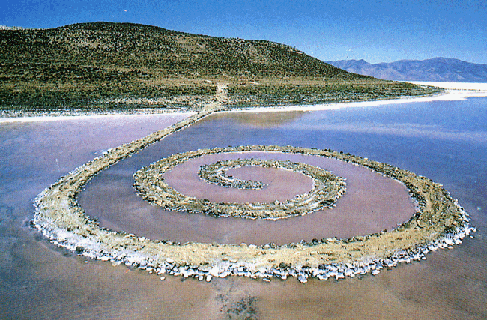In five days’ time it will be Earth Day, so today’s work of art is a so-called “Earthwork” by the American sculptor and land artist Robert Smithson. Entitled Spiral Jetty, it was created in Utah, in the United States, in 1970.
Smithson was born in New Jersey in 1938 and in 1953 won a scholarship to the Art Students League in New York. In 1956 he studied for a short while at the Brooklyn Museum School and by the late 1950s he was painting in an Abstract Expressionist style. Although he was younger than the first generation of Abstract Expressionist artists, he shared their stated ambition to create a form of contemporary art that might yet seem charged with the power of ancient myths and legends. During the 1960s, Smithson became increasingly disenchanted with the world of museums and art galleries, the cycle of production and display, sale and exchange into which art and artists had been so thoroughly absorbed. Like many of his contemporaries, he believed that the widespread acceptance of avant-garde art, at just about every level of consumer-capitalist society, had robbed the avant-garde of its energy and purpose. He dreamed of creating a work of art that could not be bought or sold, that would simply exist, and persist, like a modern equivalent to the great ruined monuments of vanished civilisations.
Spiral Jetty was the realisation of that dream, a curving promontory of bulldozed rock and stone projecting about a quarter of a mile into the Great Salt Lake, in the Utah desert – about as close to the middle of nowhere as Smithson could find. The work’s shape flaunts the superb and arrogant uselessness of art. It is a jetty that leads nowhere, a gigantic meander maze that also resembles a vast...


